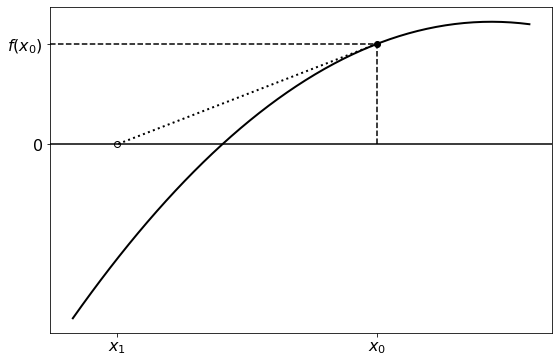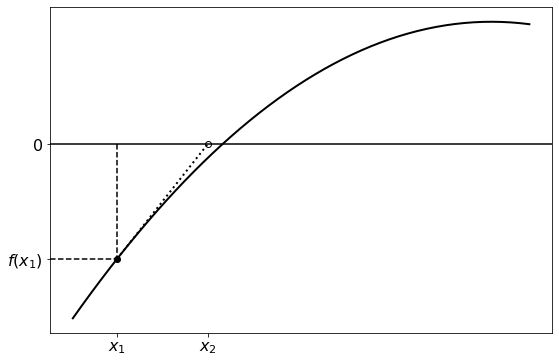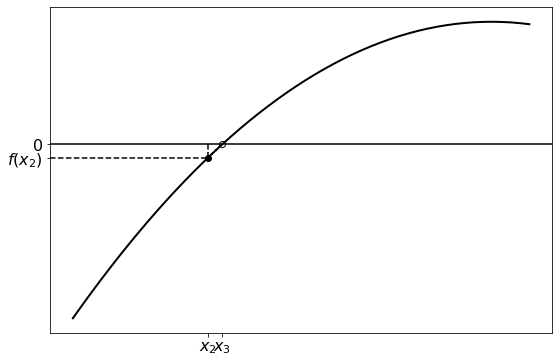Newton-Raphson Method¶
The Newton-Raphson method is similar to the secant method, except here we construct a straight line that passes through a point \((x_0, f(x_0))\) with a gradient of \(f^\prime (x_0)\), the tangent of \(f(x)\) at that point. The next point, \(x_1\), is the intersection of this line with the \(x\)-axis:

As before, this process can be repeated with \(x_1\), and the rest of the points after it, converging closer to the root. Further iterations are illustrated in the following figures:


To calculate the point \(x_n\) using the previous point \(x_{n-1}\), we start by constructing the line running through \((x_{n-1}, f(x_{n-1}))\):
at the \(x\)-intercept, \(y = 0\) and \(x = x_n\):
Precision¶
Similarly to the secant method, the precision for the Newton-Raphson method can be set for a given tolerance by finding \(n\) such that:
Instability¶
The Newton-Raphson method suffers from much the same issues as the secant method.
